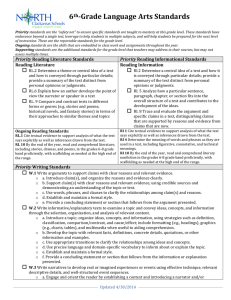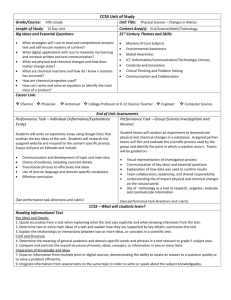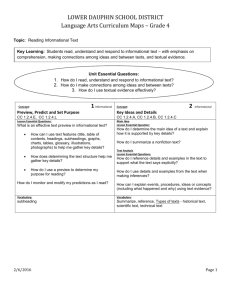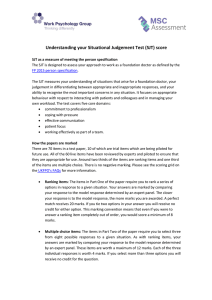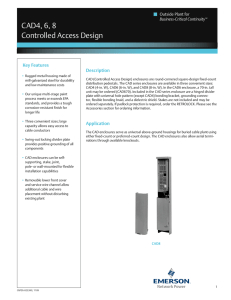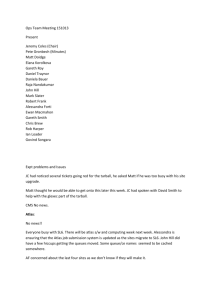Grade 6 Sample Informational Skills Ladder
advertisement
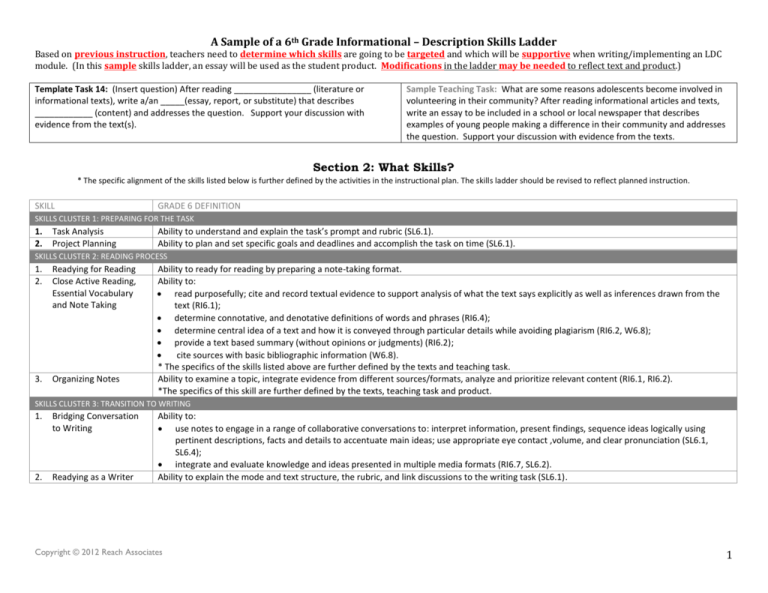
A Sample of a 6th Grade Informational – Description Skills Ladder Based on previous instruction, teachers need to determine which skills are going to be targeted and which will be supportive when writing/implementing an LDC module. (In this sample skills ladder, an essay will be used as the student product. Modifications in the ladder may be needed to reflect text and product.) Template Task 14: (Insert question) After reading ________________ (literature or informational texts), write a/an _____(essay, report, or substitute) that describes ____________ (content) and addresses the question. Support your discussion with evidence from the text(s). Sample Teaching Task: What are some reasons adolescents become involved in volunteering in their community? After reading informational articles and texts, write an essay to be included in a school or local newspaper that describes examples of young people making a difference in their community and addresses the question. Support your discussion with evidence from the texts. Section 2: What Skills? * The specific alignment of the skills listed below is further defined by the activities in the instructional plan. The skills ladder should be revised to reflect planned instruction. SKILL GRADE 6 DEFINITION SKILLS CLUSTER 1: PREPARING FOR THE TASK 1. 2. Task Analysis Project Planning Ability to understand and explain the task’s prompt and rubric (SL6.1). Ability to plan and set specific goals and deadlines and accomplish the task on time (SL6.1). SKILLS CLUSTER 2: READING PROCESS 1. 2. Readying for Reading Close Active Reading, Essential Vocabulary and Note Taking 3. Organizing Notes Ability to ready for reading by preparing a note-taking format. Ability to: read purposefully; cite and record textual evidence to support analysis of what the text says explicitly as well as inferences drawn from the text (RI6.1); determine connotative, and denotative definitions of words and phrases (RI6.4); determine central idea of a text and how it is conveyed through particular details while avoiding plagiarism (RI6.2, W6.8); provide a text based summary (without opinions or judgments) (RI6.2); cite sources with basic bibliographic information (W6.8). * The specifics of the skills listed above are further defined by the texts and teaching task. Ability to examine a topic, integrate evidence from different sources/formats, analyze and prioritize relevant content (RI6.1, RI6.2). *The specifics of this skill are further defined by the texts, teaching task and product. SKILLS CLUSTER 3: TRANSITION TO WRITING 1. Bridging Conversation to Writing 2. Readying as a Writer Ability to: use notes to engage in a range of collaborative conversations to: interpret information, present findings, sequence ideas logically using pertinent descriptions, facts and details to accentuate main ideas; use appropriate eye contact ,volume, and clear pronunciation (SL6.1, SL6.4); integrate and evaluate knowledge and ideas presented in multiple media formats (RI6.7, SL6.2). Ability to explain the mode and text structure, the rubric, and link discussions to the writing task (SL6.1). Copyright © 2012 Reach Associates 1 SKILLS CLUSTER 4: WRITING PROCESS 1. 2. Establishing Focus Planning 3. Development 1 4. Development 2 5. Development 3 6. Revision 1 7. Revision 2 8. Editing Ability to write a focus/thesis statement (W6.2). Ability to develop a line of thought and text structure appropriate to task, audience and purpose and relevant to completing informational/explanatory writing (W6.4). Ability to: write an initial draft of an opening paragraph that introduces the topic (W6.2); incorporate appropriate transition words and phrases to clarify the relationships among ideas and concepts (W6.2); use precise language and domain-specific vocabulary (W6.2). Ability to: construct an initial draft of the body paragraphs which develops the topic with relevant facts, definitions, concrete details, quotations and examples from multiple print and digital sources (W6.2, W6.8); incorporate appropriate transition words and phrases to clarify the relationships among ideas and concepts (W6.2); use precise language and domain-specific vocabulary (W6.2). Ability to: incorporate appropriate transition words and phrases to clarify the relationships among ideas and concepts (W6.2); use precise language and domain-specific vocabulary (W6.2); construct an initial draft of a concluding statement or section that follows from the information presented (W6.2). Ability to develop a clear and coherent line of thought which responds to the prompt and maintains focus on developing all aspects of the task steadily throughout the piece (W6.4). Ability to use words, sentence patterns and knowledge of language (pronouns) to refine and strengthen the development of informational/explanatory writing (W6.5, W6.10, L6.1). Ability to demonstrate command of conventions of standard English grammar and usage; capitalization, punctuation and spelling when writing and speaking (L6.1, L6.2). Copyright © 2012 Reach Associates 2
